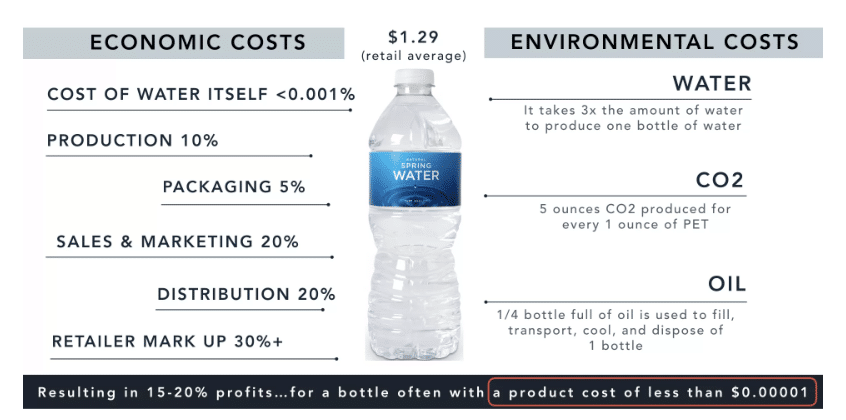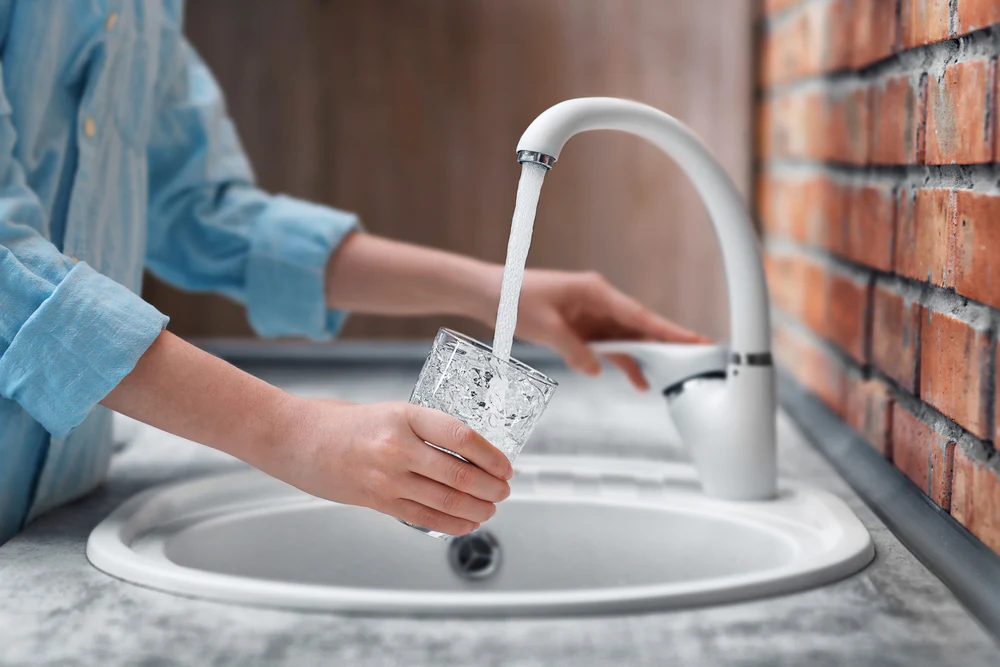Bottled water cost is astounding when you think of how much you’re paying for production and distribution compared to the water itself. It’s even more shocking when you consider the detrimental effects it has on the environment at every stage of its existence. From the amount of energy that’s needed for plastic bottle production to the landfill waste that continues to pile up without decomposition, bottled water is costly. It is cleaner for the environment to utilize our top-of-the-line water refill station with a refillable water bottle than to buy endless plastic bottles.
Everyone should have access to clean, affordable, drinking water without having to compromise the planet. By making the switch to an advanced water purification system that not only delivers crisp-tasting purified water that’s readily available and reduces your carbon footprint, but you are also lowering the cost of bottled water for yourself as well as for the future generations.
In today’s world where consumers buy more bottled water than any other bottled beverage, the demand for filtered, delicious water is evident. Why not supply it in a way that is less of a cost on all levels?
Economic and Environmental Cost Breakdown of Bottled Water
The average plastic bottle of water costs $1.29. The water itself accounts for less than $0.00001 and the rest is a markup based on plastic bottle production, including packaging, marketing, and other factors to increase the price. At face value, it seems like an inexpensive drink option but when compared to more sustainable options, it may come as a surprise to learn just how much money is spent each year on bottled water.
Bottled water statistics from 2018 showed consumers spent $18.5 billion on bottled water. When you consider how much it takes to produce and dispose of bottled water, it’s easy to see how plastic waste has put the environment at risk. It takes:
- Three times the amount of water to produce one plastic bottle’s worth
- Five ounces of CO2 for every one ounce of PET (Polyethylene terephthalate)
- one-quarter of a bottle of oil to fill, transport, cool, and dispose of a single bottle of water
Plastic bottles meant for recycling centers often end up in landfills where it will take hundreds of years from them to decompose fully. Research shows approximately 91% of plastic isn’t recycled and much of this ends up in our oceans. Plastic waste pollutes our waters, disrupts marine ecosystems, and affects the availability of fish and other seafood. By 2050, it’s estimated the ocean will contain more plastic than fish.
It seems like a lot to risk for a resource that, in most areas, is readily available at a fraction of the cost. A cost-effective solution is using a water system to get the hydration you need without the economic strain or harmful environmental damage caused by plastic bottles.
An Eco-Friendly Way to Drink Water
When it comes to staying hydrated, many don’t enjoy the taste of plain tap water because of the additional chemicals and sediments that often lace city water pipes. That’s one of the main reasons people drink bottled water. However, there’s no need to compromise taste for convenience when you can get both from FloWater’s Water Refill Station. Not only is this alternative healthier for you, but it’s also more eco-friendly as well. It even offers something more purified compared to filtered water.
This delivery system transforms tap water into purified drinking water that tastes crisp and clean without putting an additional strain on the environment. The water goes through seven, advanced filtration steps, including advanced reverse osmosis, to improve the taste of the water while removing the solid impurities that exist at the original source. One of the filters also adds in electrolytes (often found in sports drinks) to give the body extra elements necessary for healthy body functions.
Each refill station reduces the amount of plastic waste by encouraging people to use a refillable water bottle rather than one-time plastic containers. It helps to conserve energy by using LED lights and sleep mode. These stations are designed to hold seven gallons of purified water available on-demand to meet the needs of the largest of crowds. The more businesses, schools, hotels, and other organizations use this purified water system, the less it costs the environment and your health.
The danger of plastic waste is alarming but without ready-made solutions to take its place, people will continue to rely on convenience versus how much it affects the planet long-term. By setting up a water refill system that is eco-conscious and can deliver to a high capacity of people, it changes the drinking water game. It helps to alleviate the economic and environmental burden and deliver great-tasting quality water.
Making Small Changes Now For a Big Impact in The Future
Anyone has the ability to reduce how much money they spend on bottled water. Although the retail average seems minimal per bottle, over time the buying expense becomes increasingly expensive. A similar concept applies for decreasing the amount of plastic waste. For example, if 50 people decide to eliminate bottled water from their daily routines, that’s already 1,500 plastic bottles that aren’t going to end up in a landfill or the ocean every month.
When you factor that number to the billions of people that make up the planet, that’s quite a difference that can be made from one small change. Consider the overall true bottled water cost and what you can do to make a difference for the economy, environment, and your health.
Sources:





